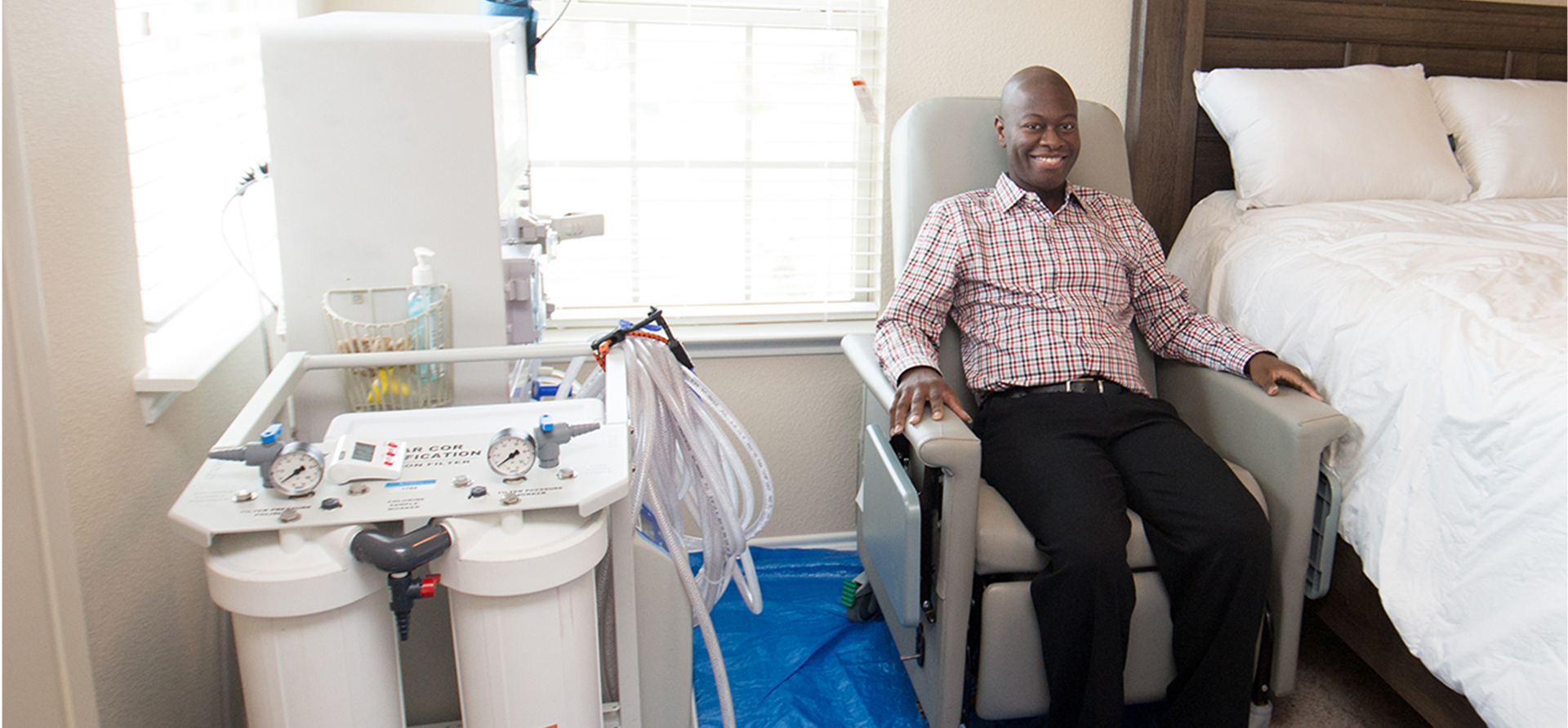HOME DIALYSIS

HOW WE PROVIDE STAFF-ASSISTED, AT-HOME HEMODIALYSIS
Liberty Home Dialysis will provide a nurse who will come to you and deliver treatment in the privacy and comfort of your own home. We recognize that it’s not convenient for everyone to come to a dialysis facility three times per week, so we do our best to remove all barriers to receiving dialysis by bringing the treatment to you.
Not only do you have a nurse assigned to you that comes to your home three times per week, we also provide a complete care team which includes a nephrologist, dietitian, and social worker. Your care team will come to your home to meet with you each month, or more frequently if necessary, to talk with you about your dialysis treatments and health concerns.
We believe that patients who receive dialysis at home should receive the same high level of care and attention as those who come to our dialysis centers.
Our entire team comes to you to ensure that you receive the best care possible.
VASCULAR ACCESS
Preparations for hemodialysis should be made at least several weeks in advance.
You will need to have a procedure to create an “access” several weeks or months before treatment begins, as it needs time to heal or “mature.”
Liberty Home Dialysis works with the Dallas Vascular Center, a state of the art, Joint Commission Gold Seal-Approved facility.
Vascular access creates a way for blood to be removed from the body, circulate through the dialysis machine, and then return to the body at a rate that is higher than can be achieved through a normal vein. There are three major types of access. Your kidney doctor will recommend which option is best for you.
ABOUT HEMODIALYSIS
Hemodialysis is a treatment for kidney failure that uses a machine to filter your blood outside your body. At the start of a hemodialysis treatment, a dialysis nurse places two needles into your arm. A pump on the hemodialysis machine draws your blood through one of the needles into a tube, a few ounces at a time.
Your blood travels through the tube to the filter, called a dialyzer. Inside the dialyzer, your blood flows through thin fibers that filter out wastes, extra salt, and extra fluid. After the dialyzer filters your blood, a different tube carries your blood back to your body through the second needle.